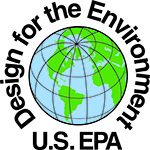
Principles of Sustainability
Chapter 5 - Industrial Approaches to Sustainability
Part 4 - Design for the Environment
 The “design for” in Design for the Environment (DfE) is the active planning of product manufacturing, service provision, and process deployment that fully integrates environmental considerations. The considerations can include the use of greener alternatives - like safer chemicals; the use of renewable and recycled resources; minimization of energy consumption — in manufacturing and in use; risk reduction through material substitution; and integration of environmental and occupational health considerations throughout all phases of a product’s life cycle. Often DfE is used in conjunction with a life cycle assessment (LCA), which quantitatively and qualitatively books the complete assessment of the inputs and outputs of a product, process, or service. LCA can help determine that sensitivity of changes in the design process that will have the greatest positive impacts, and the least negative impacts when examining alternatives.
The “design for” in Design for the Environment (DfE) is the active planning of product manufacturing, service provision, and process deployment that fully integrates environmental considerations. The considerations can include the use of greener alternatives - like safer chemicals; the use of renewable and recycled resources; minimization of energy consumption — in manufacturing and in use; risk reduction through material substitution; and integration of environmental and occupational health considerations throughout all phases of a product’s life cycle. Often DfE is used in conjunction with a life cycle assessment (LCA), which quantitatively and qualitatively books the complete assessment of the inputs and outputs of a product, process, or service. LCA can help determine that sensitivity of changes in the design process that will have the greatest positive impacts, and the least negative impacts when examining alternatives.
DfE, as a program, is a forward looking partnership of businesses, the USEPA, and finally the consumer through product labeling that indicates DfE best practices. According to the USEPA (USEPA, 2001), businesses can advance DfE by:
- "Evaluating the human health and environmental impacts of its processes and products.
- "Identifying what information is needed to make human health and environmental decisions.
- "Conducting an assessment of alternatives.
- "Considering cross-media impacts and the benefits of substituting chemicals.
- "Reducing the use and release of toxic chemicals through the innovation of cleaner technologies that use safer chemicals.
- "Implementing pollution prevention, energy efficiency, and other resource conservation measures.
- "Making products that can be reused, refurbished, remanufactured, or recycled.
Monitoring the environmental impacts and costs associated with each product or process.
- And, "recognizing that although change can be rapid, in many cases a cycle of evaluation and continuous improvement is needed."
DfE "Best Practices" are industry or process specific guidance tools that help those using specifc chemicals or processes in the manufacturing cycle — or in the end products used by other businesses or consumers, and deploy cleaner alternatives that help reduce costs, risks, disposal challenges, and environmental impact. Integral in DfE is the concept of pollution prevention, which is reducing pollution at the source — often in the manufacturing process — and thus reducing the need for recycling, waste treatment, or disposal.
USEPA has active DfE programs for Alternatives Assessments; Best Practices; and Safer Product Labelling. The CleanGredients® Database, was developed by the nonprofit GreenBlue® to help manufacturers find better ingredients for cleaning products.
Keywords
- Design for the Environment (DfE)
- cleaner technologies
- pollution prevention
- life cycle assessment
- resource conservation
- reuse, recycle, refurbish, remanufacture
- technologies substitutes
- best practices
- green supply chain
- Integrated Environmental Management System (IEMS)
- risk reduction
- continuous improvement
- risk reduction
- sustainable design
Reading
- USEPA Design for the Environment Program (2001)
- USEPA What is DfE? (2011)
